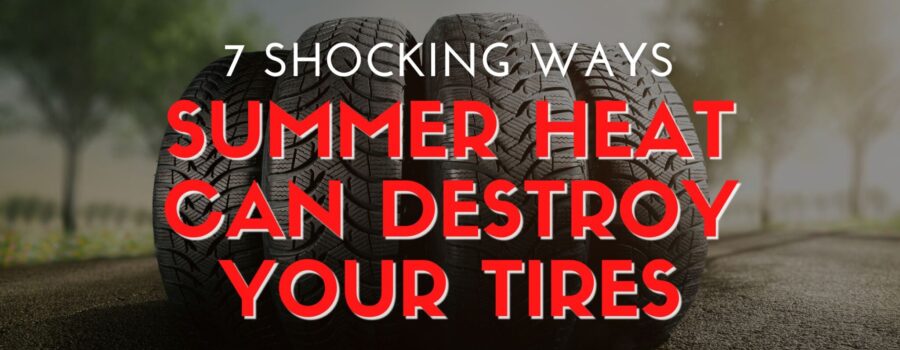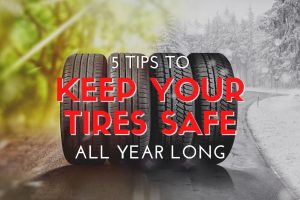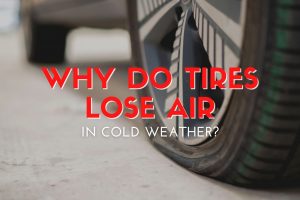Summer Heat Vs Tires: Shocking Ways It Can Wreak Havoc!
When summer temperatures soar in Alabama, most drivers think about sunblock, iced drinks, and keeping their A/C running—not their tires. But did you know that extreme summer heat can wreak havoc on your tires if you’re not careful?
From increased blowout risks to faster tread wear, hot weather brings a host of tire-related problems. In this blog, we’ll explore 7 critical ways summer heat affects your tires, how to stay safe, and what you can do to protect your investment.
Let’s beat the heat—starting with your tires.
Why Summer Heat Is So Tough on Tires
Tires are made of rubber compounds that respond to changes in temperature. As the mercury rises, the rubber becomes more pliable and air pressure fluctuates. Combine that with blistering pavement and long highway drives, and your tires are suddenly under extreme stress.
Key Summer Tire Stressors:
- Hot pavement temperatures (often 130°F or higher)
- Long-distance road trips
- Overloaded vehicles during vacations
- Tire pressure expansion
- Increased friction due to underinflation or alignment issues
Understanding how heat affects your tires can save you from inconvenient breakdowns—or worse.
1. Tire Pressure Spikes in Hot Weather
One of the most overlooked dangers of summer driving is overinflation due to heat. For every 10°F increase in ambient temperature, tire pressure can rise by approximately 1 PSI. That might not sound like much, but a sudden 30°F heat spike could raise your tire pressure by 3 PSI or more.
Why It Matters:
- Overinflated tires reduce traction.
- It increases the risk of a blowout.
- Uneven tire wear shortens the life of your tires.
Pro Tip: Check your tire pressure when your tires are cold—ideally before driving in the morning—and compare it to your manufacturer’s recommended PSI.
2. Heat Accelerates Tread Wear
Rubber compounds in tires break down faster under high temperatures. If you’re driving on sunbaked roads every day, your tire tread can wear out quicker than expected. This is especially true if your tires are underinflated or misaligned.
Signs of Accelerated Wear:
- Bald patches or uneven tread
- Cracking in the sidewall
- Reduced grip, especially in rain
Don’t let heat rob your tires of their grip—routine inspections are your best defense.
3. Increased Risk of Blowouts
This is where the heat gets dangerous. Blowouts are more common in summer than in any other season. As the temperature rises, the air inside your tires expands. If your tires are already compromised—due to age, damage, or improper pressure—the risk of a sudden rupture skyrockets.
Common Causes of Summer Blowouts:
- Worn-out tread
- Under- or overinflation
- Hitting a pothole or road hazard
- Driving on aged or dry-rotted tires
If you haven’t checked your tire condition recently, now is the time.
4. Road Surface Temperature Destroys Rubber Faster
While the air temperature might be 90°F, the pavement can reach over 130°F or more. Your tires are in constant contact with that heat, especially during long drives on highways. This accelerates rubber degradation and increases the chances of cracking and tire separation.
Signs of Heat-Related Rubber Damage:
- Brittleness in sidewalls
- Fine surface cracks
- Loss of flexibility
Replacing aging or heat-damaged tires before summer trips is a smart move.
5. Low Tire Pressure Increases Friction (and Danger)
Ironically, while heat increases air pressure, some tires still run underinflated due to slow leaks, valve issues, or punctures. When that happens, the contact patch grows, creating more friction—and friction generates even more heat.
The Result?
- Tire overheating
- Compromised sidewalls
- Higher chance of catastrophic failure
Check your tires regularly and look for slow leaks or embedded objects.
6. Overloading Compounds the Problem
Many summer travelers load up their vehicles with extra luggage, passengers, and gear. But this additional weight pushes your tires to the limit—especially in the heat.
What Overloading Does:
- Increases tire temperature
- Accelerates wear and tear
- Raises the chance of tread separation
Pro Tip: Check your tire’s load rating (on the sidewall) and never exceed it—especially during hot months.
7. Neglected Tire Maintenance = Higher Summer Risks
Summer heat doesn’t mix well with poor tire maintenance. Drivers who neglect inspections, alignment checks, and rotations are more likely to face issues on the road.
Regular Summer Tire Maintenance Includes:
- Tire pressure checks at least once a month
- Tread depth inspections
- Tire rotation every 5,000 to 7,500 miles
- Visual checks for cracks or punctures
A 10-minute tire check can prevent a 3-hour roadside wait.
Common Summer Tire Questions
Q: How often should I check my tire pressure in summer?
A: At least once a month—or before long trips. Hot weather can cause pressure fluctuations that impact performance and safety.
Q: Can tires explode from heat?
A: Yes, extreme heat combined with overinflation or worn tires can cause blowouts. Regular checks help reduce this risk.
Q: Should I deflate my tires in the summer?
A: No. Always maintain the manufacturer’s recommended PSI, measured when tires are cold. Never “bleed” air due to temporary heat-related expansion.
Q: Do all tires handle summer heat the same?
A: No. Performance tires and low-profile tires often run hotter. Quality all-season or summer-rated tires handle heat better, but they still require regular maintenance.
How to Protect Your Tires in the Summer
- Check Tire Pressure Weekly: Especially during heatwaves or after long drives.
- Avoid Overloading: Check your load limits and pack lighter if possible.
- Inspect Tread and Sidewalls: Look for cracks, bubbles, or uneven wear.
- Rotate Tires Regularly: To ensure even wear and better heat distribution.
- Don’t Ignore TPMS Warnings: Your Tire Pressure Monitoring System is your first alert to danger.
- Store Spare Tires Properly: Heat affects unused tires too—don’t leave them in hot trunks or sun-exposed areas.
Contact Us
Postle Tire Barn has been serving the tire and automotive needs of the Tuscaloosa and West Alabama area for more than 40 years. When the summer heat hits and it’s time to replace your worn tires—or you just need a reliable set for safe travel—we’re the ones to know.
Give us a call at 205-391-0062 or email us at [email protected]. Our team is ready to help you stay safe on the road this summer with expert tire inspections, new and used tire options, and honest advice. Summer Heat Vs Tires Summer Heat Vs Tires Summer Heat Vs Tires Summer Heat Vs Tires




Leave a Reply
Your email is safe with us.